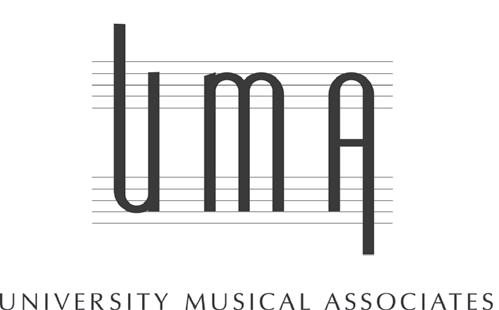THE FLORIDA STATE UNIVERSITY COLLEGE OF MUSIC
Presents THE UNIVERSITY PHILHARMONIA
Alexander Jiménez, Music Director and Conductor Nathan Haines, Assistant Conductor and
THE UNIVERSITY SINGERS
Kevin Fenton, Music Director and Conductor Katie Kenkel and Ethan Murphy, Assistant Conductors
Saturday, November 12, 2022 Seven-thirty in the Evening Ruby Diamond Concert Hall
850-894-8700 www.beethovenandcompany.com 719 North Calhoun Street, Suite E Tallahassee, Florida 32303 Tom Buchanan, owner
Supporting theArts
PROGRAM
Coriolanus Overture, Op. 62 Ludwig Van Beethoven (1770–1827)
The Bamboula: Rhapsodic Dance, Op. 75 Samuel Coleridge-Taylor (1875–1912)
Suite No. 1 from Carmen Georges Bizet
I. Prélude (1838–1875) II. Aragonaise III. Intermezzo IV. Séguedille
V. Les Dragons d’Acala
VI. Les Toréadors
INTERMISSION
Earth
Symphony Jake Runestad
I. Evolution (b. 1986)
II. Ambition Todd Boss, libretto III. Destruction
IV. Lament
V. Recovery
Nathan Haines, assistant conductor
Please refrain from talking, entering, or exiting while performers are playing. Food and drink are prohibited in all concert halls. Please turn off cell phones and all other electronic devices. Please refrain from putting feet on seats and seat backs. Children who become disruptive should be taken out of the performance hall so they do not disturb the musicians and other audience members. Health Reminder: The Florida Board of Governors and Florida State University expect masks to be worn by all individuals in all FSU facilities. Thank you for your cooperation.
Kevin Fenton, Professor of Choral Conducting and Ensembles and Director of the FSU University Singers and Men’s Glee (Collegians), has conducted the Virginia Tech Meistersingers (1998), the University Singers (2002, 2003, 2006, 2007 and 2013), and the Festival Singers of Florida (2012 and 2018) in performances at regional and national conventions of ACDA and NAfME. He has served as a Fulbright Specialist to SubSaharan Africa, teaching choral conducting and conducting pedagogy at Kenya’s Conservatory of Music. In fall 2019, Kevin taught conducting at the Universitas Pelita Harapan in Jakarta, Indonesia. As co-founder of AVoice4Peace, Kevin has held AVoice4Peace events in Kenya, Indonesia, Ireland, China, and for the Florida and Southern Region ACDA conventions. Dr. Fenton has conducted choirs in 35 states, including twenty-nine all-state choirs. Internationally, Kevin was a featured conductor for the International Choral Festival and Conference in Xi’an (2017) and Beijing (2007), South Africa’s National Youth Choir (2016), and the Dublin International Choral Festival (2016). A champion of new music, Dr. Fenton has conducted over thirty premiere performances.
Dr. Fenton has taught graduate and undergraduate courses in choral literature and choral conducting at Florida State University since 2000, and his textbook, Foundations of Choral Conducting, is being used in beginning conducting classes throughout the country. He is a recipient of the Florida State University Teaching Award for Excellence, the Gamma Mu Chapter of Delta Omicron Music Professor of the Year Award, and the Wayne Hugoboom Distinguished Florida Service Award. Dr. Fenton is Artistic Director of the Festival Singers of Florida, who are celebrating their 12th season.
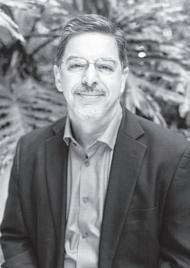
Alexander Jiménez serves as Professor of Conducting, Director of Orchestral Activities, and String Area Coordinator at the Florida State University College of Music. Prior to his appointment at FSU in 2000, Jiménez served on the faculties of San Francisco State University and Palm Beach Atlantic University. Under his direction, the FSU orchestral studies program has expanded and been recognized as one of the leading orchestral studies programs in the country. Dr. Jiménez has recorded on the Naxos, Neos, Canadian Broadcasting Ovation, and Mark labels. Deeply committed to music by living composers, Dr. Jiménez has had fruitful and longterm collaborations with such eminent composers as Ellen Taafe Zwilich and the late Ladisalv Kubík, as well as working with Anthony Iannaccone, Krzysztof Penderecki, Martin Bresnick, Zhou Long, Chen Yi, Harold Schiffman, Louis Andriessen, and Georg Friedrich Haas. The University Symphony Orchestra has appeared as a featured
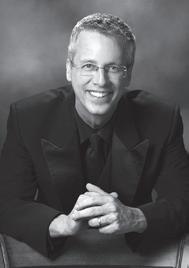
ABOUT THE CONDUCTORS
orchestra for the College Orchestra Directors National Conference and the American String Teachers Association National Conference, and the University Philharmonia has performed at the Southeast Conference of the Music Educators National Conference (now the National Association for Music Education). The national PBS broadcast of Zwilich’s Peanuts’ Gallery® featuring the University Symphony Orchestra was named outstanding performance of 2007 by the National Educational Television Association.
Active as a guest conductor and clinician, Jiménez has conducted extensively in the U.S., Europe, and the Middle East, including with the Brno Philharmonic (Czech Republic) and the Israel Netanya Chamber Orchestra. In 2022, Dr. Jiménez led the Royal Scottish National Orchestra in a recording of works by Anthony Iannaccone. Deeply devoted to music education, he serves as international ambassador for the European Festival of Music for Young People in Belgium and serves as Festival Orchestra Director and Artistic Consultant for the Blue Lake Fine Arts Camp in Michigan. Dr. Jiménez has been the recipient of University Teaching Awards in 2006 and 2018, The Transformation Through Teaching Award, and the Guardian of the Flame Award which is given to an outstanding faculty mentor. Dr. Jiménez is a past president of the College Orchestra Directors Association and served as music director of the Tallahassee Youth Orchestras from 20002017.
NOTES ON THE PROGRAM
Beethoven: Coriolan Overture, Op. 62
Beethoven wrote almost a dozen overtures, the most famous, of course, being the four that are connected with his only opera, Fidelio. Some are awful, like Wellington’s Victory, and others are of the stellar quality that the composer’s name evokes. Coriolanus was a play about the tragic Roman general, who was torn between his plan to revolt and the entreaties of his mother and wife to abandon his scheme. Beethoven was familiar with the story through both the works of Shakespeare and Plutarch, but Beethoven’s overture was written for the play of a minor literary contemporary, Heinrich von Collin. Completed in 1807, after having written and revised the overtures to Fidelio, Beethoven obviously approached the composition of this overture immersed in the themes of moral conflict and their resolution that inform the opera. It is easy to hear this conflict from the beginning in the dynamic and incisive themes that vie for superiority in the structure of the composition. It is typical of Beethoven in that—although the overall form is the usual sonata allegro form, with its characteristic recapitulation at the end—he does not simply resolve conflict with traditional musical “consensus.” Rather, he transforms and alters one of the themes in a way that parallels the movement of Coriolanus’ change in personal character--reaching a new plateau of psychological identity. In a nutshell, then, we see one of Beethoven’s characteristic concerns in his approach to drama in music.
– © 2015 William E. Runyan
Coleridge-Taylor: The Bamboula: Rhapsodic Dance
Samuel Coleridge-Taylor was born in the central London neighborhood of Holborn in 1875. Soon after his birth, his family moved to the outskirts of London to Croydon, where he would spend the rest of his life. Named after the famed poet, Samuel Taylor Coleridge, Coleridge-Taylor was born to Alice Hare Martin, a white Briton, and to Dr. Daniel Taylor, who was from Sierra Leone in West Africa. While Alice was pregnant, Dr. Taylor returned to West Africa, apparently not aware that Alice was pregnant, and never returned. Samuel would never know his father.
Coleridge-Taylor showed great talent for music and in 1890 he become a student in the renowned Royal College of Music in London. There he studied with Charles Villiers Stanford, who also claimed as his students such future luminaries as Ralph Vaughan Williams and Gustav Holst. Only the second black student to attend the College, Coleridge-Taylor was highly regarded among his peers and gained the attention of influential musicians of the day such as George Grove and Edward Elgar.
The Song of Hiawatha, a trilogy of three cantatas, would become Coleridge-Taylor’s bestknown works. Based on Henry Wadsworth Longfellow’s poem of the same name, he found great similarities between the Native American and African American experiences and gave that synergy voice in The Song of Hiawatha. He also found a personal connection to Hiawatha who, like him, spends part of the poetic narrative searching for his absent father.
In writing The Song of Hiawatha, Coleridge-Taylor associated himself with the antiimperialism and Pan-Africanism movements of the day. As a leading delegate in the first PanAfrican Conference in London in 1900, Coleridge-Taylor would gain recognition among African Americans as a symbol of hope thanks to his successes as a composer in Britain. According to historian Jeffrey Green, “For people of African birth or descent he had a role as a leader: a person whose achievements were to international standards, and whose successes countered concepts of racial inferiority.” Coleridge-Taylor first came to the United States in 1904 where he was treated as a celebrity. He conducted performances of his own music, became the first black man in American to conduct a white orchestra, and was one of very few people of African descent to be invited to the White House, where he was honored by President Theodore Roosevelt. Sadly, his life was cut short in 1912 when he died suddenly of pneumonia. His legacy would live on until World War II through annual performances of The Song of Hiawatha at Royal Albert Hall from 1924-1939, during which time the work would be performed as often as Handel’s Messiah and Mendelssohn’s Elijah.
Coleridge-Taylor wrote The Bamboula: Rhapsodic Dance for Orchestra in 1910 for the Litchfield Choral Festival in Connecticut. The Bamboula is an African drum and corresponding dance accompanied by these drums that came to the United States from Haiti during the exodus of African slaves deported from Haiti to Louisiana, specifically New Orleans. These slaves were known to dance the Bamboula on the so-called Congo Square near the French Quarter. The first appearance of the Bamboula in art music is found in a work for piano of the same name by the American composer Louis Moreau Gottschalk in 1848.
Coleridge-Taylor’s work is composed for a large orchestra that includes two flutes and piccolo, pairs of oboes, clarinets, and bassoons, four horns, two trumpets, three trombones and tuba, timpani, snare drum, bass drum, cymbals, triangle, and orchestra bells, and strings. A grand fanfare featuring the brass choir opens the work and introduces the primary Bamboula theme, an energetic dotted rhythm in 2/4 time that permeates the work. Coleridge-Taylor’s mastery of harmony and orchestral texture is clearly on display. A tranquil middle section turns our dance theme into a lyrical song passed between solo woodwinds with a gently undulating accompaniment from the strings. The strings take over the tranquil melody with increasing intensity before returning to the original tempo and spirit of the work.
Performances of this work are exceptionally and sadly rare. It is an honor to share this masterpiece with our audience tonight.
– Alexander Jiménez
Bizet: Suite No. 1 from Carmen
Georges Bizet was a genuine musical prodigy, whose talent was early and widely recognized, who studied with the best teachers and composers in France, who was perhaps the close equal of Liszt as a pianist, who won the Prix de Rome, and who composed perhaps the most popular opera of all time. And yet—his career was a checkered one, full of missteps, works that were never finished, works that were finished and not performed, betrayals and failures with the French operatic establishment, and an early death. He planned, started, or substantially worked on some thirty operas, but finished only about five, of which only two achieved success. His musical legacy was a story of lost manuscripts, poor or no scholarly attention, bad editions, and general neglect. Today, the American musical public knows his work almost entirely through his immortal opera Carmen, and to a lesser degree, the opera The Pearl Fishers, as well as his orchestral suites of incidental music from the play, L’Arlésienne. The situation is only somewhat better in Europe—even in his native France. While he did compose a substantial body of work, it was admittedly irregular in quality— certainly in reception. Moreover, to survive financially, he was reduced to spending much of his musical life arranging the music of other composers.
But there is Carmen. It clearly is one of the greatest operas of the nineteenth century and takes a place of honor among all in the genre. After all the failures, disappointments, and false starts, Bizet hit pay dirt with this one. He worked on it during 1873-4, and its première took place at the Opéra-Comique in Paris in March of 1875. It was not an easy birth. The orchestra complained about the difficulty of the score (“unplayable”); the singers said the orchestra was too loud; the women in the chorus resented having to smoke and fight on stage. And more. But the opera was a success, owing perhaps as much to its perceived scandalous nature as anything. And poor Bizet died shortly after two heart attacks in May at the age of thirty-six.
Now, of course, everyone appreciates Bizet’s colorful, but relatively light, orchestration, and his real ear for tonal color that well suits the opera’s Spanish setting. Even the master of orchestration himself, Richard Strauss, recommended students of the subject to Carmen, not to Wagner. Its evocation of Spain is matchless, and its realism on the stage made operatic history. The two suites extracted from the score by his friend, Ernest Guiraud, quickly entered into the standard repertoire for orchestra, and have remained so.
Suite No. 1 is comprised of six excerpts. The first, the “Prélude” from Act I, ominously sets the stage with its fate motive, featuring the color of the sinister, extremely low cornet. The “Aragonaise,” the entr’acte to Act IV, features exotic percussion, woodwind solos, and gentle arabesques. The “Intermezzo,” the entr’acte to Act III, is a delicate solo for flute and harp, whose tranquility is belied by the tragedy to come. Following is the “Séguedille” from Act I, where Carmen, jailed for slashing a co- worker’s face, tries to seduce her captor, Don José, and effect her escape. Seductive, it is. “Les Dragons d’Acala” is the en’tracte before Act II, a pompous little military march for dragoons—not dragons—led by the bassoons. And finally the evergreen “Les Toréadors,” from the prelude and the procession of the toreadors from Act IV ends the suite.
– © 2015 William E. Runyan
Runestad: Earth Symphony
Over hundreds of years of musical creation, composers developed the symphonic form into a potent, large-scale framework for exploring profound ideas. The sheer number of musicians involved and long duration of the work, allow the time, space, and sonic possibilities for a significant musical journey. For this commission from True Concord Voices & Orchestra, I knew that creating a large work for these forces would necessitate a significant story to tell — one of relevance and power, drawn from our beautiful and complex human experiences. Every day we hear of more fires, floods, hurricanes, droughts, tsunamis, extinctions, and diseases that impact life around the globe. The earth is changing, due to the impact of human behavior, and how we respond to these changes will determine the survival of our species.
Through brainstorming with my frequent collaborator, poet/librettist Todd Boss, we decided that giving voice to Mother Earth would be a powerful approach for this piece. Todd created a sweeping, gorgeous, and compelling five-part monologue of a mother telling the history of her children — how they admired her, harmed her, and ultimately how she recovered.
Her story begins in a pre-life genesis that tracks the evolution of humans, whose apprehension of Earth’s laws endear them to her as nothing short of miraculous (her beloved “Mirabilia”). Movement 1: “Evolution” hints at the musical themes of each subsequent section and establishes a sonic relationship between Earth (D Major) and humankind (Eb Major), which is explored throughout the work. Movement 2: “Ambition” dramatizes humanity’s fall from grace by retelling the Greek myth of Icarus and hearkening to ancient instruments and melodies (including the Seikilos Epitaph — the oldest, complete musical composition yet discovered). Movement 3: “Destruction” charges through a series of ecological cataclysms
— forest fire, storms, earthquakes — illustrated by growling brass, raging percussion, and shrieking woodwinds. Movement 4: “Lament” expresses Earth’s grief in a loving farewell to humanity that echoes Henry Purcell’s 17th-century aria, “When I Am Laid in Earth” (Dido’s Lament), and its iconic descending bass-line chaconne. Movement 5: “Recovery” finds Earth restoring balance and moving on, into a deep spacetime like the one from which she emerged. By anthropomorphizing Earth herself, drawing on the familiar earth-mother trope, “Earth Symphony” enables entry into our own ecological shame, guilt, responsibility, potential, and redemption, all from a wide-angled, time-telescoped lens, thereby asking our most immediately pressing environmental questions in an entirely new way.
– Jake Runestad
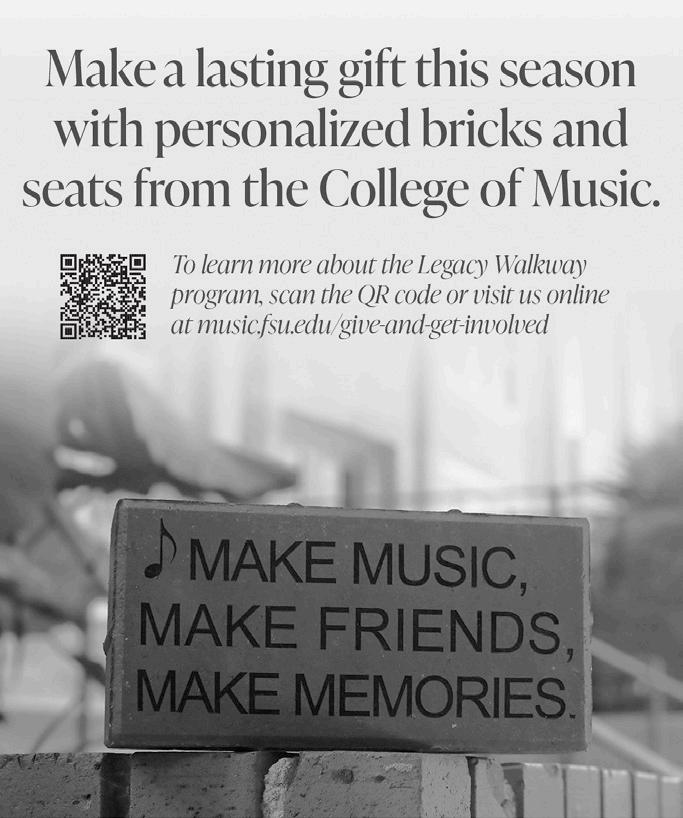
TEXTS
Earth Symphony
Jake Runestad; libretto by Todd Boss I. Evolution
Forever alone — four billion years of empty space and dormant stone.
Then you were born: Humankind! and soon upon your face there dawned a trace of mind!
You scorned the odds to be reborn as gods of reason, authors of wonder, inventors of alchemy, chemistry, astronomy. You alone unwound the helix of my chi. You mirrored me to me.
Mirabilia!
You were my light. Never shall I dare to dream another dream so bright.
II. Ambition
And how are you fallen so soon?
Do you remember Icarus, whose father gave him wings of wax and feathers for a toy?
There he is — in memory’s eye — canary of a boy!
[Icarus:] O, joy — so much at hand! — to soar the strand, over sea and shore! Whee! — to taste ambition pure!
Two wingbeats more, and I can see the patterns on the ocean floor. O, me! I’m free as albatross! Stronger than ever with a father so clever with beeswax and feather! I flap them together and higher and higher I rise! —
I am a dream! I’ll touch the moon!
How small she is — the bluegreen planet far below... I belong to her no longer. Who am I, without her?
The sun. The sun grows. The sun grows ever hotter...
[Earth:] Yes I remember Icarus, who flew too near the sun. Waxen wings undone, he tumbled, thrashing, and came crashing into the sea! So fell humanity. So fell I.
III. Destruction
Timore atmosphaeram, you make your mother torturer! Twist me against my nature, waste me to tinder, roast me under the torches of the sun till I’m undone.
You dam my waters, bleach my corals, flood me, strangle me, slaughter each other, set me on fire!
I am rage! I am war! Where are your gods now?
Mirabilia!
What have you done, over-blessed one? Briefest of species, what have you done?
IV. Lament
Sleep now, my children, now your days are done. Nevermore shall you adore the setting of the sun.
Sleep now, forever, lofted in time. No seraphim to rouse thee, no carillons to chime.
Mirabilia!
Never shall I dare to dream a dream so bright.
Sleep now, my children, my wonder, my light. Never shall I dare to dream another dream so bright.
Mirabilia!
Never shall I dare to dream a dream so bright.
Sleep now, my children, though the cradle fall. You rest among the yesterdays, the softest place of all.
Mirabilia!
V. Recovery
Alone forever, the mirror dims. Empty space. Dormant stone. No. I shall not go alone. Ivy shall recover every avenue, seaweed swallow every drain, and forestry sow a sorcery over every human stain.
None shall weep, and none shall witness, while my wordless work is done.
Slowly, in the shell of a factory, a gray whale, circling aimlessly, writes a disappearing history in the shadows of the deep, and none shall weep. There shall come a day like the first day, so heavenly, so clear. Mirabilia, you would love it here.
University Philharmonia Personnel
Alexander Jiménez, Music Director and Conductor Nathan Haines, Assistant Conductor
Violin I
Gabriel Salinas-Guzman‡ Elizabeth Milan
Francesco Capitano Madelyne Garnot Alyssa Gonall Daniela Ramirez Sierra Su Sean Hartman Sarita Thosteson Bailey Bryant Alexander Roes Christopher Wheaton
Violin II Hope Welsh* Victoria Joyce Joan Prokopowicz Michaelangelo Woodrich Carlos Cordero Ismar Cabrera Harshul Mulpuru Chris Chiarotti Wood Simon Elina Nyquist Max Warren
Viola Keara Henre* Tyana McGann Spencer Schneider Harper Knopf Phil Prasse Ruth Gray Emily Lombard Abby Felde Emma Patterson
Cello Emma Hoster* Liam Sabo Caleb Singletary Marina Edwards
Noah Hays Jaden Sanzo Abigail Fernandez Sophie Stalnaker Natalie Taunton Luke Ponko Bass
Lucas Kornegay* Charles Storch Layla Feaster Christian Maldonado* Harp Lauren Barfield* Flute Peyton Dillon* Moriah Emrich Paige Douglas Piccolo Paige Douglas Oboe Alec McDaniel* Sarah Ward* Loanne Masson Anisa Herbert English Horn Anisa Herbert
Clarinet Sadie Murray* Jariel Santiago* Reymon Contrera Josh Collins Bassoon Carson Long* Ryder Kaya* Timothy Schwindt Ryan Kegg
Horn Jordan Perkins* Luis Oquendo* Adam Agonoy Clare Ottesen
Trumpet Carlos Manuel Aceves* Brian Ratledge*
Trombone Christian Estades* Jeffrey Welch Bass Trombone Masa Ohtake Tuba Sam Morris* Percussion Gus Barreda* James Wolff Equipment Manager Sierra Su
Orchestra Manager Heather Simpson
Administrative Assistant Amanda Frampton
Orchestra Librarians Nathan Haines Sebastian Jimenez
‡ Concertmaster * Principal
University Singers Personnel
Kevin Fenton, Music Director and Conductor Katie Kenkel and Ethan Murphy, Assistant Conductors
Soprano
Alissa D’Alton Maria Fazio
Sophia Gannaoui Gabriela Gaya Ellie LaJeunesse Achsah Martin
Aydyn O’Brien Morgan Watts Christina Woo
Soprano 2 Brigitte Anderson Kendall Doty Leah Duval Karleigh Kirilloff Jennifer Lamont Annie Lane Nicole Parra Hannah Paschal Madeline Schneider Kayla Tassone Danielle Young
Alto 1
Katie Kenkel
Cecilia Malley Madeline McClurg Simya Phillip Corinne Roberts Camila Rodriguez Savannah Schleich Hannah Silverstein Shayna Singer Kayla Stoeke
Alto 2
Deidra Anizor Gabriella Berrios Cait Couch Jennifer Carneiro Bridg Gorder Cecilia Hotz Sydney Levy
Tenor 1
Sean Barnett Alfred (Tiger) Davis Conner Fabrega Devon Joyce Anderson Lange William (Garrison) Mack
Jeremy Roldan Tenor 2 Stephen Brown Jackson Englund Michael Haves Christopher Martinez Kyle McDonald Chijioke Oparaji Lemuel Rexach John ValenciaLondono Ethan Westrate Reece Windjack
Baritone Cole Banfill Myles Baron Benjamin Englund Kyle Keating Johan Quevedo Sebastian Quintero Everette Reed Benjamin Reid Doogan Townsend Bass
Vincent Amiel Bagay Owen Hillman Ethan Murphy Thomas Thai Sebastian De Paula Yustiz


UNIVERSITY WIND ORCHESTRA featuring special guests Stacy Garropp, composer David Thornton, conductor Geoffrey Deibel, saxophone Justin Benavidez, tuba Wednesday, November 16, 2022 7:30 PM | Ruby Diamond Concert Hall Tickets and information at tickets.music.fsu.edu Coming Soon
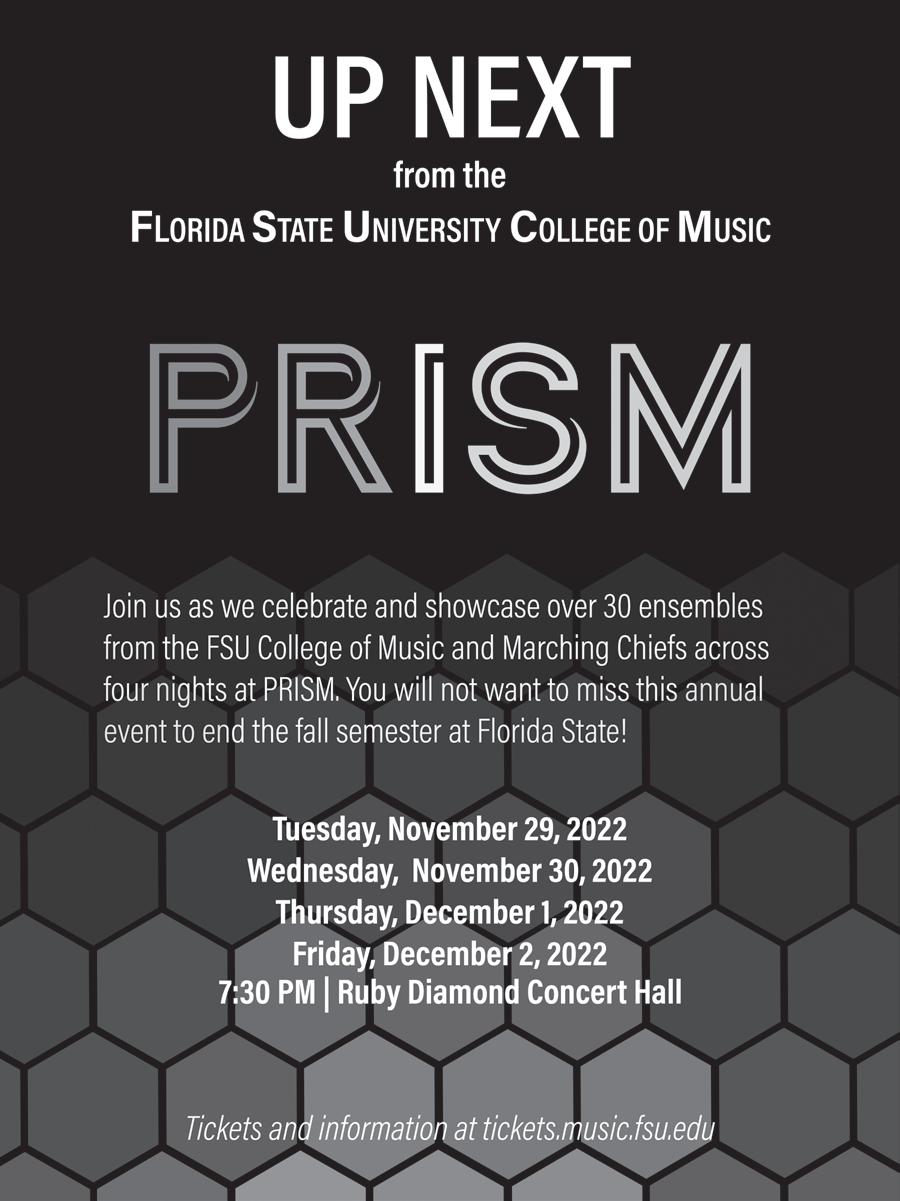
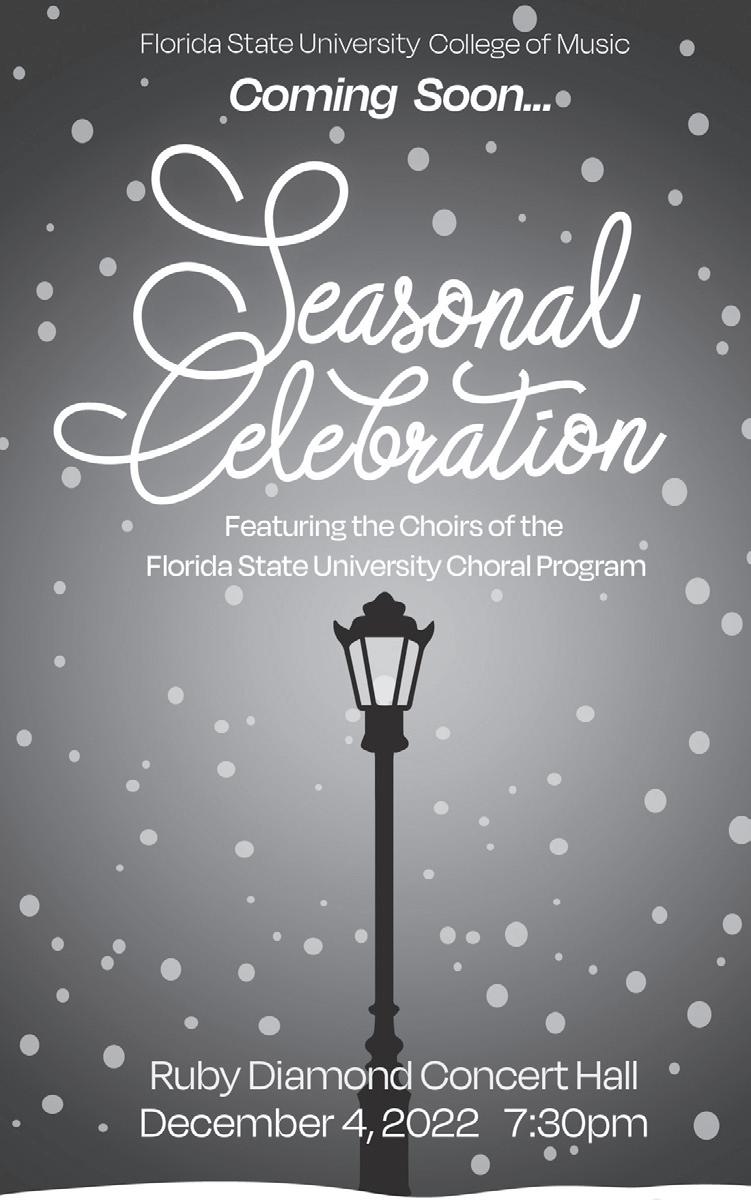
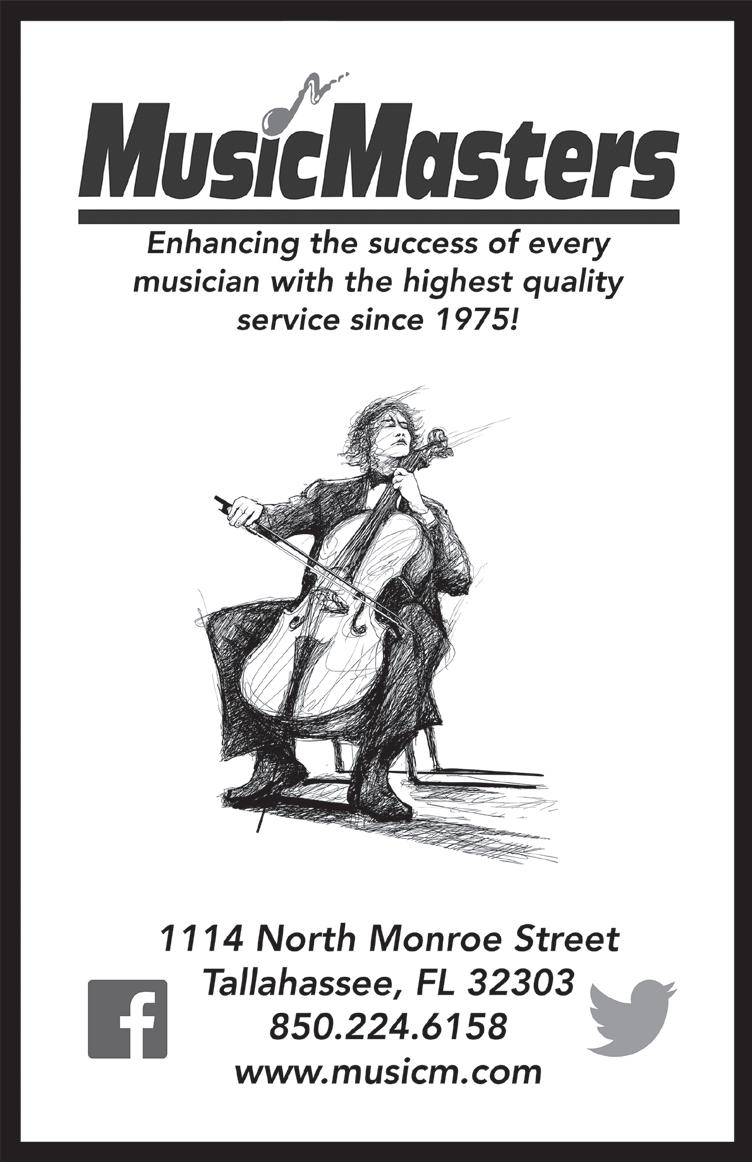
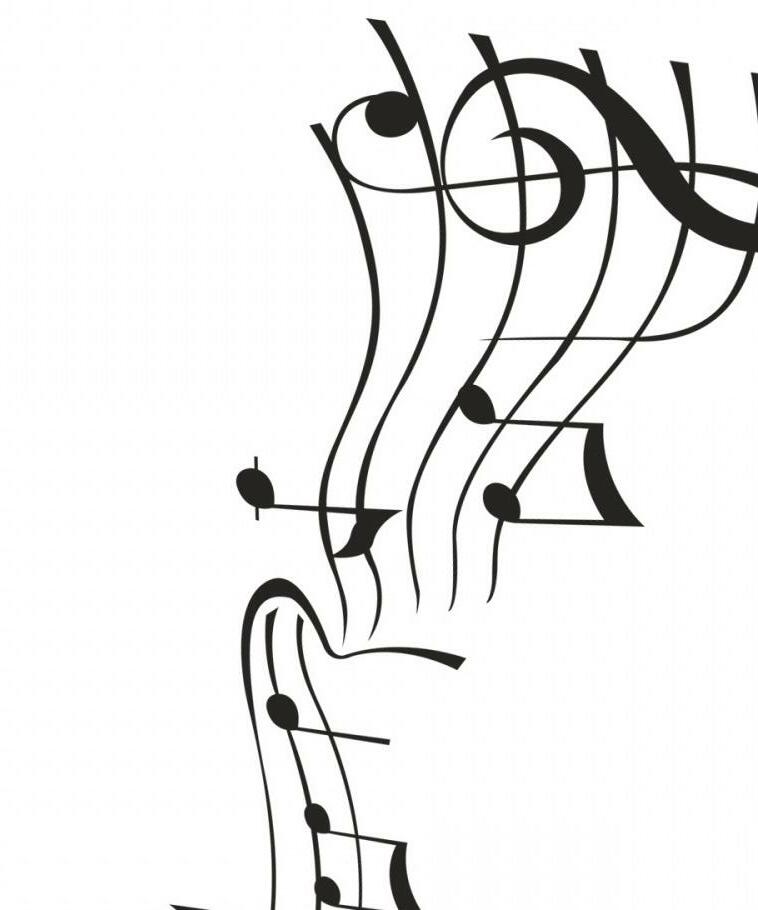
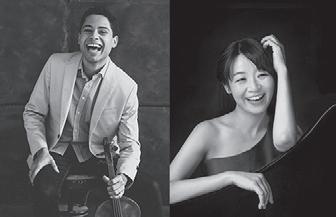
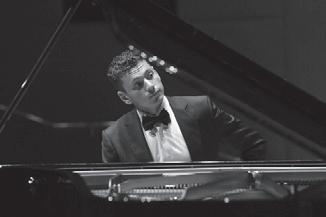
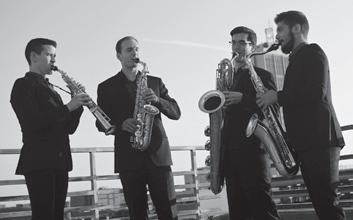
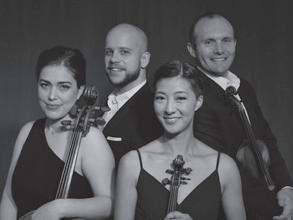

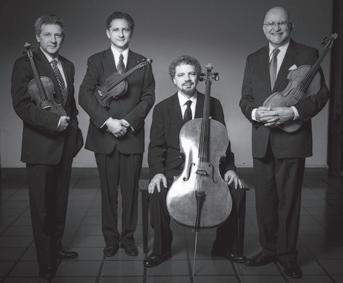



September 18, Bak & Chang, viola/piano October 23, Dominic Cheli, piano January 22, Sinta Quartet, saxophone February 17, Jasper String Quartet, Valentine Fundraiser, 7 PM St. Peter’s Anglican Cathedral March 5, Coro Vocati, vocal ensemble May 7, Cuarteto Latinoamericano, string quartet 2022-23 Concert Season www.theartistseries.org 850-445-1616 Live Concert, 4 PM Opperman Hall Livestream & Video available
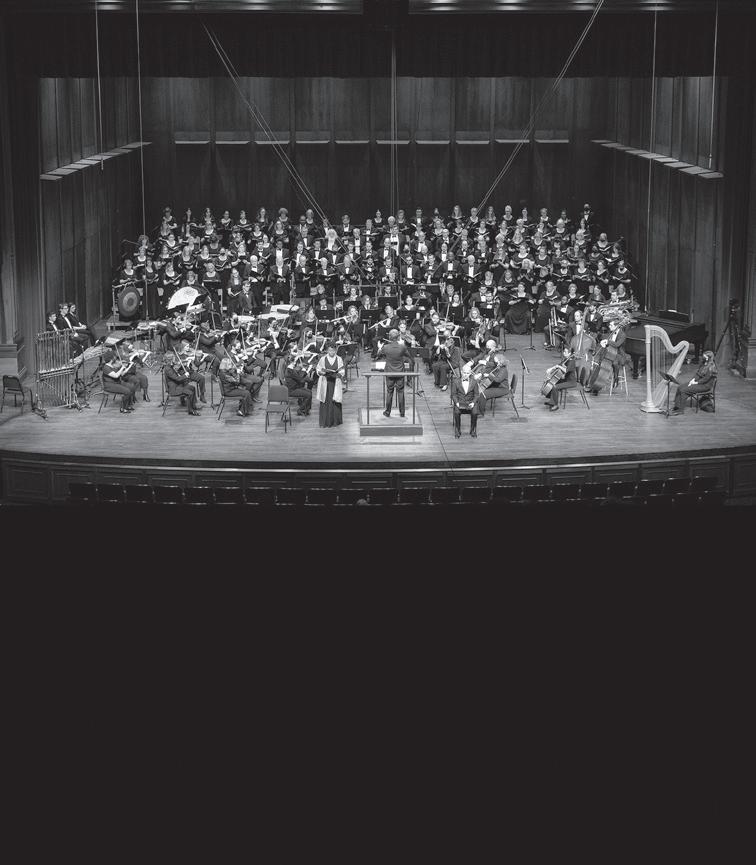
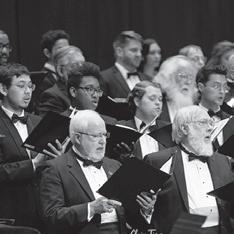
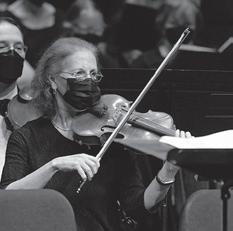

P
: C laire t imm P
P hy 2022-2023 Concert Season – Celebrating 35 Years of Song! –FALL Sunday, November 20 4:00 PM Coronation Mass in C major, W.A. Mozart *Tickets: tcchorus.org or call 850-597-0603 UNITY 16 Sunday, January 29 4:00 PM “Repair The Future” Weather, Rollo Dilworth, Poem by Claudia Rankine Joined by The Florida A&M University Concert Choir SPRING Sunday, April 30 4:00 PM Carmina Burana, Carl Orff All performances in Ruby Diamond Concert Hall, The Florida State University Michael Hanawalt, Artistic Director
hoto
hotogra
Florida State University COLLEGE OF MUSIC
special thanks to
Les and Ruth Akers
Sole Sponsors of the UMA Concert Series
JOIN
THE UNIVERSITY MUSICAL ASSOCIATES TODAY!
For more than 30 years the University Musical Associates (UMA) has served as the patron group for the FSU College of Music performance programs. We support performances by our talented students and faculty both on the FSU campus and at prestigious events outside of Tallahassee. We also enhance the College and community by helping to bring in guest artists who are world-class performers and scholars. Join us as we return to the stage for the 2022-23 season by becoming a member and subscribing to the UMA Concert Series.
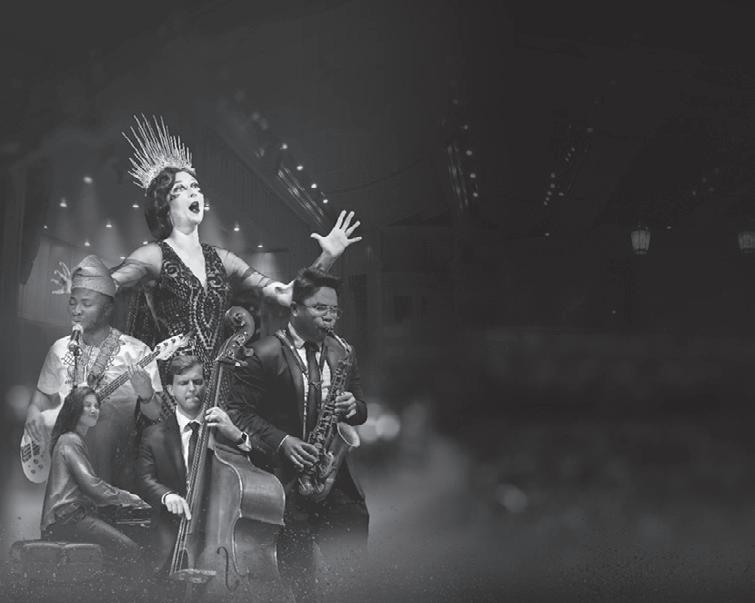
UNIVERSITY MUSICAL ASSOCIATES
2022-2023
Dean’s Circle
Jim and Betty Ann Rodgers
Gold Circle
Mary and Glenn Cole Margaret and Russ Dancy Louie and Avon Doll Patrick and Kathy Dunnigan Richard Dusenbury and Kathi Jaschke Kevin and Suzanne Fenton
* Emory and Dorothy Johnson
Marty Beech Kathryn M. Beggs Greg and Karen Boebinger
* Karen Bradley Donna Callaway Dr. Kathryn Karrh Cashin Brian Causseaux and W. David Young Pete and Bonnie Chamlis Jody and Nancy Coogle Jim and Sandy Dafoe Claire de Lune
Floyd Deterding and Dr. Kelley Lang Jack and Diane Dowling
* Bonnie Fowler, Armor Realty Joy and James Frank William Fredrickson and Suzanne Rita Byrnes Larry Gerber
John and Mary Geringer Michael D. Hartline Myron and Judy Hayden
* Marc J. and Kathryn S. Hebda Dottie and Jon Hinkle Todd S. Hinkle
* Paula and Bill Smith
Albert and Darlene Oosterhof Bob Parker Todd and Kelin Queen Francis C. Skilling, Jr. Bret Whissel Marilynn Wills
Sustainer
Karolyn and Ed Holmes Alexander and Dawn Jiménez Dr. Gregory and Dr. Margo Jones Howard Kessler and Anne Van Meter Michael Killoren and Randy Nolan Dennis G. King, Esq. Mr. and Mrs. T. Last Linda and Bob Lovins Kay and Ken Mayo Robert and Patty McDonald Walter and Marian Moore Ann Parramore Thomas Gary Parrish Dr. Evelyn Ploumis-Devick and David Devick Mary Anne J. Price David and Joanne Rasmussen Ken and J.R. Saginario Nell and Marshall Stranburg William and Ma’Su Sweeney
* Alison R. Voorhees
Teresa White Cassandra Williams Kathy D. Wright
Joyce Andrews
Mary S. Bert
Marcia and Carl Bjerregaard
Virginia W. and John L. Bryant
Joan and Kip Carpenter
Stacey Christian Malcolm Craig Rochelle Davis William H. Davis Jeannie Head Dixon
Judith Flanigan
John S. and Linda H. Fleming L. Kathryn Funchess
Ruth Godfrey-Sigler Bryan and Nancy Goff Harvey and Judy Goldman
Dianne Gregory Julie Griffith
Carole Hayes Jerry and Bobbi Hill Madeleine Hirsiger-Carr Jane A. Hudson Richard and Linda Hyson Judith H. Jolly Carolyn Jordan Dean Kindley
Patron
* Jonathan Klepper and Jimmy Cole
Frances C. Kratt
Donna Legare Annelise Leysieffer Dan MacDonald
William and Gayle Manley Mary “Jo” Mansfield Pat and Mike Meredith Ann and Don Morrow Dr. William C. Murray Karalee Poschman Gloria Priest Edward Reid John and Carol Ryor Paula Saunders Scott Scearce Betty Serow and Gigi Foster Jeanette Sickel Judy and Mike Stone George S. Sweat Marjorie Turnbull Dr. Ralph V. Turner Paul van der Mark Sylvia B. Walford Geoffrey and Simone Watts Jeff Wright
Associate
Jayme Agee
Robert M. Bukovic
David and Mary Coburn Carla Connors and Timothy Hoekman Martha Cunningham
Dr. Aleksandra and Dr. Geoffrey Deibel Pamala J. Doffek
John and Jodi Drew
The Fennema Family Gene and Deborah Glotzbach
Laura Gayle Green Miriam Gurniak
Donna H. Heald
Nicole and Kael Johnson Joseph Kraus
DL LaSeur and Lennie Helfand Alan and Marilyn Marshall Kathleen and Lealand McCharen Moncrief Flom Family Sanford Safron Sudarat Songsiridej and Mary Schaad Mr. and Mrs. K. Scott Wagers Karen Wensing Drs. Heidi Louise and Christopher Williams
Lifetime Members
Les and Ruth Ruggles Akers
John and Willa Almlof
Florence Helen Ashby Mrs. Reubin Askew
* Tom and Cathy Bishop
Nancy Bivins
Ramona D. Bowman
André and Eleanor Connan Russell and Janis Courson
* J.W. Richard and Tina Davis
Ginny Densmore
Nancy Smith Fichter and Robert W. Fichter
Carole D. Fiore
Patricia J. Flowers
Jane E. Hughes
Hilda Hunter
Julio Jiménez
Kirby W. and Margaret-Ray Kemper
Patsy Kickliter
Anthony M. and Mallen E. Komlyn
Fred Kreimer
Beverly Locke-Ewald Ralph and Sue Mancuso Meredith and Elsa L. McKinney Ermine M. Owenby Mike and Judy Pate
Jane Quinton
David D. Redfield
Laura and Sam Rogers, Jr. Dr. Louis St. Petery Sharon Stone
Elaine Swain Donna Cay Tharpe Brig. Gen. and Mrs. William B. Webb Rick and Joan West John L. and Linda M. Williams
*University Musical Associates Executive Committee
Corporate Sponsors Beethoven & Company MusicMasters Business Sponsors WFSU Public Broadcast Center
The University Musical Associates is the community support organization for the FSU College of Music. The primary purposes of the group are to develop audiences for College of Music performances, to assist outstanding students in enriching their musical education and careers, and to support quality education and cultural activities for the Tallahassee community. If you would like information about joining the University Musical Associates, please contact Kim Shively, Director of Special Programs, at kshively@fsu.edu or 850-644-4744.
The Florida State University provides accommodations for persons with disabilities. Please notify the College of Music at 850-644-3424 at least five business days prior to a musical event if accommodation for disability or publication in alternative format is needed.
